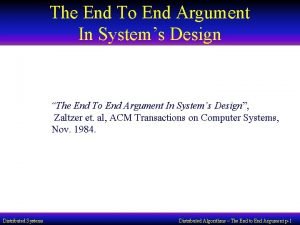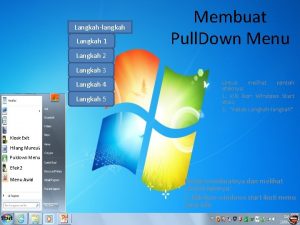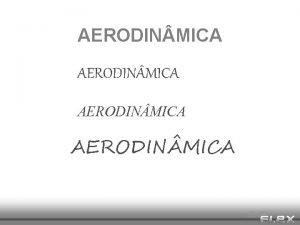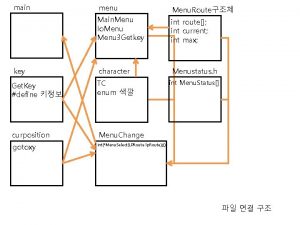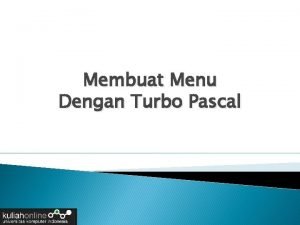TACHYMETRY END MENU INTRODUCTION TACHYMETRY SYSTEM FIELD WORK



















- Slides: 19

TACHYMETRY END

MENU INTRODUCTION TACHYMETRY SYSTEM FIELD WORK Defination Type Example work Purpose Basic principles Practical 1 END

DEFINATION OF TACHYMETRY The word tachymetry is derived from the Greek takhus metron meaning ‘swift measurement’. It is a branch of surveying where height and distances between ground marks are obtained by optical means only. An example of tachymetry method is the stadia method. The distance between marks can be obtained without using a tape. The tachymeter is any theodolite adapted, or fitted with an optical device to enable measurement to be made optically. Cross Hair reticle i= Stadia Interval Two Types of Stadia Hair END

PRINCIPLES OF OPTICAL DISTANCE MEASUREMENT Isosceles triangle Distance AB = ½ (Cd) x Cot α/2 Whereby If distance AB = D, distance Cd = S , so D = distance between two point S = base line D = ½ S Cot α/2 α = paralactic angle END

PRINCIPLES OF OPTICAL DISTANCE MEASUREMENT END

TACHYMETRY SYSTEM 1 Fixed angle: The stadia system i. Incline Sights With the Staff Vertical i. Incline Sights With the Staff Normal 2 Variable angle i. i. Tangential system – vertical staff Substence system – horizontal staff END

STADIA SYSTEM Horizontal angle Final bering Stadia Concept Vertical angle Zenith angle Text Plotting Reduced level Reading staff – upper, middle, above Distance END

Theodolite Staf Kanta objek Diafragma A Titik fokal b i x x S a c f d D Paksi alat B From these similar triangles: but l = D – (f + c), So, the stadia formula: f --- the focal length of the object glass F – the outer focal point of the object glass i --- the stadia interval ab I--- the distance from the outer focal point to the staff D---the horizontal distance required s--- the staff intercept AB c---the distance from object glass to instrument axis END

EVALUATION OF STADIA CONSTANTS, K&C UPPER STADIA = 1. 620 MIDDLE STADIA = 1. 420 UPPER STADIA = 1. 871 MIDDLE STADIA = 1. 421 LOWER STADIA = 1. 220 LOWER STADIA = 0. 971 Inst. Stn. A Staff stn. C D Vertical angle, V 90000’ 00” Upper stadia Middle stadia Lower stadia Remarks 1. 620 1. 871 1. 420 1. 421 1. 220 0. 971 Distance AC = 40 m Distance AD = 90 m END

EVALUATION OF STADIA CONSTANTS, K&C Upper stadia Middle stadia Lower stadia Upper & middle stadia Middle & lower stadia Total of stadia (staff intercept) 1. 620 1. 871 1. 420 1. 421 1. 220 0. 971 0. 200 0. 450 0. 400 0. 900 1. 871 1. 421 0. 971 Distance (m) 40 90 K and C can be calculate by using the stadia formula, D = Ks + C. D is the distance between staff and the tachymeter, s stands for staff intercept. 40 = 0. 4 K + C --------------- (1) 90 = 0. 9 K + C --------------- (2) Now, we can solve the problem by using simultaneous equation. (2) – (1) 90 – 40 = 0. 9 K – 0. 4 K 50 = 0. 5 K K PRACTISE 1 K = 100 Replace K =100 in (1) 40 = 0. 4 ( 100) + C C = 40 -40 C=0 END

PRACTISE 1 Distance (m) 30 55 90 Upper stadia Middle stadia Lower stadia 1. 433 1. 710 1. 433 2. 352 1. 710 1. 283 1. 435 1. 283 1. 903 1. 435 1. 133 1. 160 1. 133 1. 452 1. 160 2. 352 1. 902 1. 452 D =K S + C 30 = 0. 30 K + C ………(i) 55 = 0. 55 K + C ……. (ii) 90 = 0. 90 K + C ………(iii) Upper & middle stadia Middle & lower stadia 1. 433 0. 150 – 1. 283 1. 710 0. 275 – 1. 435 2. 352 0. 450 – 1. 902 RESULT K = 100 C=0 END Total of stadia (staff intercept)

PRACTICAL 1 PROCEDURE OF FIELD WORK Equipment Review Datum To order to make the field work Method of field booking Method precision work Field booking Calculate of • K & C (average value), • Final bering • Plotting

PURPOSE VIEW FIELD WORK PRACTICAL 1 BE = 6 m B E AB = 5 m DE = 5 m A D AC = 6 m CD = 5 m C

EXAMPLE RESULT PRACTICAL 1 - TACHEOMETRY BOOKING FORM (Determine value K & C) Inst. Stn. Staf Horizontal and Ht. of f stn. angle, HL inst. axis Horizontal angle, HR SETTING 285015’ 30” A B SETTING 105015’ 30” (1. 455 m) C 155010’ 36” 335012’ 30” C A SETTING 335011’ 33” SETTING 155011’ 33” (1. 305 m) D 45020’ 26” 225032’ 30” D C SETTING 225026’ 28” SETTING 45026’ 28” (1. 250 m) E 345005’ 26” 165002’ 30” E D SETTING 165003’ 58” SETTING 345003’ 58” (1. 256 m) B 265045’ 55” 85040’ 05” B E SETTING 85043’ 00” SETTING 265043’ 00” (1. 355 m) A 285015’ 26” 105012’ 30” Average horizontal angle 335011’ 33” 225026’ 28” 165003’ 58” 85043’ 00” 105013’ 58” Vertical angle, V Upper stadia Middle stadia Lower stadia 90000’ 00” 1. 205 0. 955 0. 705 90000’ 00” 1. 050 0. 750 0. 450 90000’ 00” 1. 345 1. 045 0. 745 90000’ 00” 1. 250 1. 000 0. 750 90000’ 00” 1. 530 1. 280 1. 030 90000’ 00” 0. 855 0. 605 0. 355 90000’ 00” 1. 855 1. 605 1. 355 90000’ 00” 1. 055 0. 755 0. 455 90000’ 00” 1. 355 1. 055 0. 755 90000’ 00” 1. 555 1. 305 1. 055 Remarks GIVEN REFERENCE BERING AB = 105015’ 30”

PRECISION WORK TRABAS CLASS SECOND CLASS Kelas Tikaian Lurus Piawai 1: 25000 = 105015’ 30” - 105013’ 58” = 001’ 32” (DIFFERENCE < 2’) Jarak Bering Dicerap Dipelot Tutup (Selisih) Cerapan Penyilang 0. 001 m 1” 10” 1’ 15” @ 10” ps 2 1 1: 8000 0. 001 m 1”/10” 1’ 15” @ 10” ps 2 2 1: 4000 0. 001 m 10”/20” 30” 2’ 30” @ 20” ps 2 3 1: 3000 0. 01 m 1’ 1’ 5’ @ 40” ps 1 KELAS KERJA TERABAS

REPORT PRACTICAL CC 201 ENGINEERING SURVEY 2 MARK DISTRIBUTION PRACTICAL REPORT CC 201 ASSESSMENT REPORT I. COVER PAGE II. TITLE III. THEORY IV. OBJECTIVE V. TOOLS / EQUIPMENT VI. PROCEDURE VII. RESULT VIII. DISCUSSION IX. CONCLUSION X. REFERENCE TOTAL MARKS FORMAT LAPORAN AMALI UKUR TEKIMETRI 1. Dapatkan nilai K dan C bagi setiap teodolit yang digunakan 2. Pengukuran butiran topografi tapak. Setiap kerja amali diatas perlu disertakan data pembukuan, pengiraan setiap satu dan lakaran butiran kerja. END /2 /2 /3 /3 /5 /8 /25 /5 /5 /2 /60

KESIMPULAN • KERJA AMALI YANG LENGKAP SIAP DGN: i. Pembukuan Bering Yg Betul ii. Pelarasan Bering Guna Kaedah Tertentu iii. Pengiraan nilai purata K & C iv. Pemplotan Lukisan JIKA ADA MASALAH AMALI, END

THANK YOU END

PANDUAN KEKUNCI SATU ‘SLIDE’ SEBELUMNYA ‘SLIDE’ MENU SATU ‘SLIDE’ SELEPASNYA ‘SLIDE’ PERMULAAN ‘SLIDE’ TERAKHIR END ‘SLIDE’ PANDUAN END TAMAT
 Menu defination
Menu defination End to end argument
End to end argument Menu planning example
Menu planning example Fungsi menu dan ikon pada microsoft excel
Fungsi menu dan ikon pada microsoft excel Cyclical menu
Cyclical menu Sebutkan bagian-bagian browser mozilla firefox
Sebutkan bagian-bagian browser mozilla firefox Langkah menu
Langkah menu Magnitude of magnetic force
Magnitude of magnetic force Individual differences in second language learning
Individual differences in second language learning Field dependent vs field independent
Field dependent vs field independent Distinguish between magnetic and nonmagnetic materials
Distinguish between magnetic and nonmagnetic materials E field h field
E field h field Database field types and field properties
Database field types and field properties Field dependent and field independent
Field dependent and field independent Difference between electric field and magnetic field
Difference between electric field and magnetic field Stroke volume
Stroke volume Factors affecting stroke volume
Factors affecting stroke volume Explain compiler construction tools
Explain compiler construction tools Compiler front end
Compiler front end Descendorektostomie
Descendorektostomie

